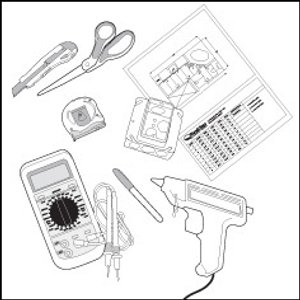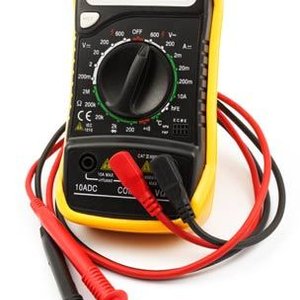
Installing Electric Floor Heat (EFH) is an easy DIY job, requiring only common household tools. Actually, Electric Floor Heat can be installed in most bathrooms in less than 2 hours.
The simple fact is that if the installer reads the Installation Manual before beginning the installation, it could eliminate most of the troubleshooting calls that we receive. Seems like a no-brainer, but you would be surprised how many people just “wing it.” Because this premise is so basic, it hasn’t been included in this list.
So, after reading the Installation Manual, here are three simple things that you can do to make your installation trouble-free:
1. Never cut the heating wire
Why not just buy a big roll and trim it to length? These are constant-watt type wires. Each individual system has a specific ohms value. The length of wire and what voltage is applied determine these ohms values. Different length wires are designed at various ohms per linear foot. These values are used to calculate the watts per square foot of the heating system. The maximum wattage per square foot allowed by the National Electric Code is 15 watts per square foot. Many of our products are manufactured right at the maximum wattage allowed by code. When wire gets removed from the system, the corresponding resistance value drops. When the ohms drop, the current (or Amps) go up. This will push the system above the allowable watts per square foot and cause the system to overheat. This calculation is also known as Ohm’s Law. For this reason, the size or length of the system can never be altered.
This same law is also why 2 systems cannot be hooked together or ‘daisy-chained’. This situation will result in too much resistance, causing the system to under-heat, resulting in poor performance.
Most of the time, a heating wire gets cut because the system is too big for the room. The main reason the system is occasionally too big for the space is because the following step was neglected…
2. Verify the dimensions of the room
The square footage of the room dictates the size of the roll or cable of EFH. If any room dimensions change, the square footage of the room changes. If the room’s floor square footage increases, it’s not a big deal. As long as the system is not being used as a sole source of heating, it’s OK if the heating system is a little bit too small for the room. The system can be positioned in such a way that it does cover the areas that are most walked-on. If the floor’s square footage is reduced (by adding a larger tub or shower stall, etc.), the system may not fit in that floor space any longer. This situation results in people doing the unthinkable and cutting the heating wire to fit the space. In step 1., we already learned why a cable should NEVER be shortened.
Some would say: “That’s OK, I’ll just run the extra cable into a closet or out into the hallway”. Good thought, but neither of those solutions is allowed by the US National Electric Code due to safety issues.
It is helpful to know that heat from the wires only travels laterally about 2” from the wire. This is why a system placed only in the middle of the room will only heat that area of the room. Heat is only present directly above the heating wire; it does not spread throughout the entire floor. This is why it is important to put the heating wires in high-traffic areas of the room and why you can pull the wires back from walls a bit for better coverage in the high-traffic areas.
On very cold days, you can have a tile that is located right over the heating wires reach a certain temperature and have an unheated tile area 6” away be 10 or more degrees cooler. This phenomenon is very noticeable on very cold days.
Moral of the story: Verify that the dimensions on your installation plan match those of your room. If the dimensions have changed, notify us immediately, before you take that heating system out to do the next step, which is to…
3. Test the heating wires the day you receive them

The heating wire must be tested 3 times (notice a theme here?) with a DIGITAL ohm meter. We strongly suggest NOT using an auto-ranging meter, but instead using one that can be set at the “200” ohm range.
Each one of our heating cables/wire/systems is tested. Once it leaves our warehouse, we have no control of the package. Because of that, test the products the day you receive them (1st time). That way, if they have been damaged, there is time to order a replacement. Do not wait until installation day to do this test.
It makes no sense to install a system under a floor without testing it first. Imagine installing a system and the frustration of turning it on and getting no heat.
When testing the systems, the field values of the system should be within -5 to +10 percent of the value on the label that is affixed to the unit. If this value is out of spec, call us right away. Please be sure to use new batteries in your DIGITAL ohm meter when you start your project.
After laying the system out on the floor, test the unit again (2nd time) before it is covered with thinset or self-leveling underlayment. Never cover a damaged system. It is better to get another system and install it, than to cover a damaged unit. Before covering the system, verify that the thermostat sensor (if used) has been installed correctly and tests “good."
If the system tests “good”, it is ready to be covered with the thinset or self-leveling underlayment.
After the final flooring is installed, test the unit again (3rd time’s the charm) before attaching it to the main electrical supply. If the unit is damaged, it should NOT be attached to electricity.
By following these 3 guidelines, you have a very good chance for a successful project. You will thank yourself on those cold, winter days when you are warm and cozy. And remember, we are here whenever you need us, 24/7 at (800) 875-5285. We know you are going to love your heated floors.




